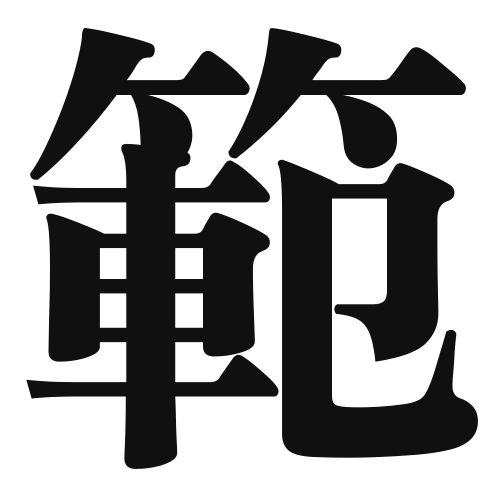1. Overview of Meaning
The kanji “範” (han) generally means “pattern” or “model.” It refers to a standard or example that can be followed or imitated.
2. Formation and Radical
Formation of the Kanji: The kanji “範” is a compound character (会意文字) that combines the elements of “竹” (bamboo) and “範” (to spread). The bamboo represents flexibility and structure, while the overall character conveys the idea of a pattern or framework.
Radical: The radical of “範” is “竹” (bamboo), which is often associated with things that are long, slender, and flexible.
3. Examples of Usage
Common Words and Phrases: Some frequently used words that include “範” are:
- 範囲 (はんい, han’i) – range, scope
- 範疇 (はんちゅう, hanchuu) – category, classification
Example Sentences in Daily Conversation:
- この問題の範囲は広いです。 (このもんだいのはんいはひろいです。) – The scope of this problem is broad.
- 彼はその範疇に入ります。 (かれはそのはんちゅうにはいります。) – He falls into that category.
4. Synonyms and Antonyms
Similar Kanji: A similar kanji is “模” (mo), which also means “pattern” or “model,” but it often emphasizes imitation or reproduction rather than a standard to follow.
Antonyms: An antonym of “範” could be “無秩序” (むちつじょ, muchitsujo), meaning “disorder” or “chaos,” which represents a lack of pattern or structure.
5. Cultural and Historical Background
Relation to Japanese Culture: The concept of “範” is significant in Japanese culture, where following patterns and models is often valued in various aspects of life, including art, education, and social behavior.
Proverbs and Idioms: One relevant proverb is “範を示す” (はんをしめす, han o shimesu), which means “to set an example,” highlighting the importance of being a role model in society.
